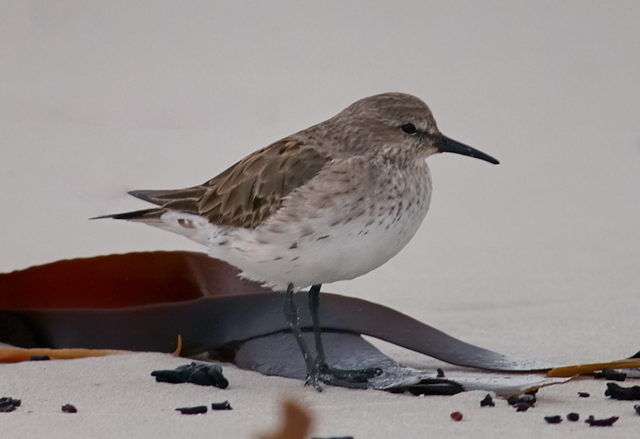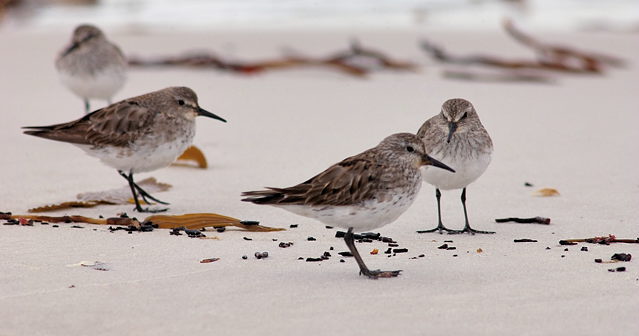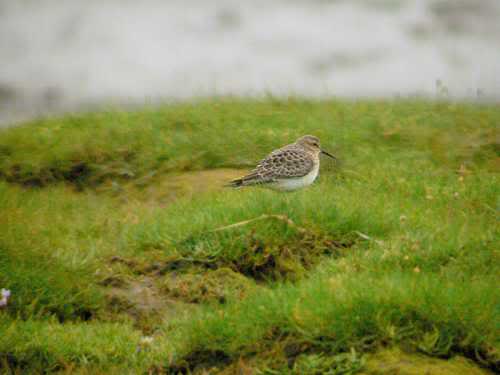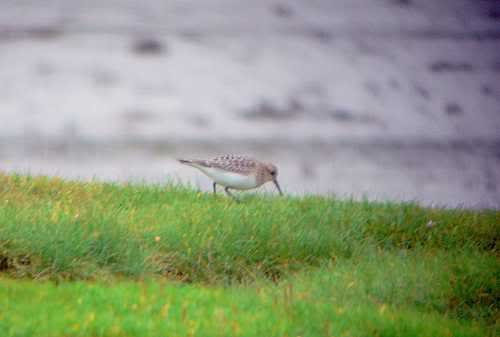Red Knot
Posted: Sun Feb 17, 2013 2:08 pm
271. Red Knot Calidris canutus (Knoet)
Order: Charadriiformes. Family: Scolopacidae
Description
Length 23-26 cm. Wingspan 47-53 cm. A short-billed wader with lack bill and olive-green legs.
Summer (breeding plumage): Brick red/chestnut, apart from white under-tail coverts and grey wings with a light bar and dark tips
Winter (non-breeding plumage: Reddish parts become grey-brown above and white below.
Juvenile birds have distinctive submarginal lines and brown coverts during the first year.
Distribution: Breeds in the high Arctic, in the tundra mainly above 70° North, heading south in the non-breeding season to Europe, South-East Asia, Australasia, Central and South America and Africa's west coast from Mauritania through West Africa to southern Africa. C. c. canutus breeds in West-Siberia and flies via Europe to West- and South-Africa. Here it is locally fairly common along the west coast from Namibia to the Cape Peninsula, Western Cape, while more scarce further east in the Eastern Cape and KwaZulu-Natal.
Three large tidal inlets, Walvis Bay Lagoon, Sandwich Harbour and Langebaan Lagoon, support about two-thirds of the southern African population.
Habitat
It generally prefers large mud and sand flats in sheltered coastal lagoon and embayments, occurring less regularly in coastal wetlands, estuaries, and open coasts.
Movements and migrations
The provenance of those that spend the non-breeding season in southern Africa is likely to be the Taimyr Peninsula in Siberia. Departs from its breeding grounds in July to head down the east Atlantic seaboard and eventually reaching southern Africa from September-October, leaving again in mid April. It is capable of flying non stop for over 4000 km's, although some birds may be incapable of making the journey back to the breeding grounds and so stay in southern Africa through winter. The proportion of juveniles in the region is linked to the abundance of lemmings at its breeding colonies, as they are the main prey of Arctic foxes. About every third year lemmings are much more scarce, so the foxes resort to feeding on the chicks of ground-nesting birds, including the Red knot. This means that that juveniles represent 24-61% of all the Red knots at Langebaan Lagoon in normal years, but when lemmings are scarce the proportion of juveniles is just 0 - 7%.
Diet
Molluscs, crustaceans and other intertidal invertebrates. It mainly eats bivalves, especially Tellimaya trigona, supplemented with other molluscs (including the snail Hydrobia), polychaetes, crustaceans and echnoderms, doing most of its foraging by pecking the ground or probing the mud while moving forwards. It often joins mixed species flocks along with other waders, such as Curlew sandpipers and Little stints.
Breeding
The Red Knot is territorial and seasonally monogamous. The Red Knot nests on the ground, near water, and usually inland. The nest is a shallow scrape lined with leaves, lichens and moss. Males construct three to five nest scrapes in their territories prior to the arrival of the females. The female lays three or more usually four eggs. They are incubated by both adults. The incubation period lasting around 22 days. The chicks are precocial at hatching. The male tends the young until they fledge.
Call
Contact call low-pitched knut. Listen to Bird Call.
Status
Common summer visitor.
Order: Charadriiformes. Family: Scolopacidae
Description
Length 23-26 cm. Wingspan 47-53 cm. A short-billed wader with lack bill and olive-green legs.
Summer (breeding plumage): Brick red/chestnut, apart from white under-tail coverts and grey wings with a light bar and dark tips
Winter (non-breeding plumage: Reddish parts become grey-brown above and white below.
Juvenile birds have distinctive submarginal lines and brown coverts during the first year.
Distribution: Breeds in the high Arctic, in the tundra mainly above 70° North, heading south in the non-breeding season to Europe, South-East Asia, Australasia, Central and South America and Africa's west coast from Mauritania through West Africa to southern Africa. C. c. canutus breeds in West-Siberia and flies via Europe to West- and South-Africa. Here it is locally fairly common along the west coast from Namibia to the Cape Peninsula, Western Cape, while more scarce further east in the Eastern Cape and KwaZulu-Natal.
Three large tidal inlets, Walvis Bay Lagoon, Sandwich Harbour and Langebaan Lagoon, support about two-thirds of the southern African population.
Habitat
It generally prefers large mud and sand flats in sheltered coastal lagoon and embayments, occurring less regularly in coastal wetlands, estuaries, and open coasts.
Movements and migrations
The provenance of those that spend the non-breeding season in southern Africa is likely to be the Taimyr Peninsula in Siberia. Departs from its breeding grounds in July to head down the east Atlantic seaboard and eventually reaching southern Africa from September-October, leaving again in mid April. It is capable of flying non stop for over 4000 km's, although some birds may be incapable of making the journey back to the breeding grounds and so stay in southern Africa through winter. The proportion of juveniles in the region is linked to the abundance of lemmings at its breeding colonies, as they are the main prey of Arctic foxes. About every third year lemmings are much more scarce, so the foxes resort to feeding on the chicks of ground-nesting birds, including the Red knot. This means that that juveniles represent 24-61% of all the Red knots at Langebaan Lagoon in normal years, but when lemmings are scarce the proportion of juveniles is just 0 - 7%.
Diet
Molluscs, crustaceans and other intertidal invertebrates. It mainly eats bivalves, especially Tellimaya trigona, supplemented with other molluscs (including the snail Hydrobia), polychaetes, crustaceans and echnoderms, doing most of its foraging by pecking the ground or probing the mud while moving forwards. It often joins mixed species flocks along with other waders, such as Curlew sandpipers and Little stints.
Breeding
The Red Knot is territorial and seasonally monogamous. The Red Knot nests on the ground, near water, and usually inland. The nest is a shallow scrape lined with leaves, lichens and moss. Males construct three to five nest scrapes in their territories prior to the arrival of the females. The female lays three or more usually four eggs. They are incubated by both adults. The incubation period lasting around 22 days. The chicks are precocial at hatching. The male tends the young until they fledge.
Call
Contact call low-pitched knut. Listen to Bird Call.
Status
Common summer visitor.
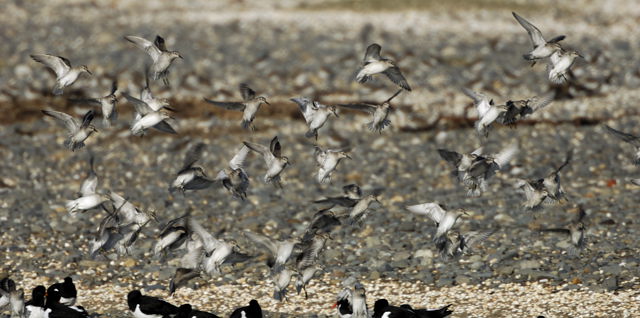
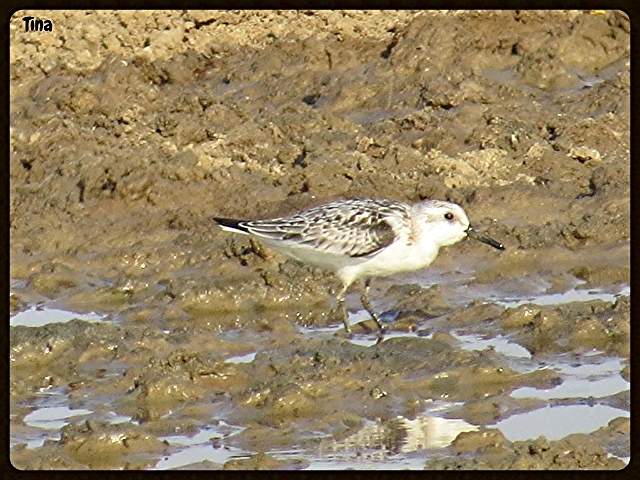 © Tina
© Tina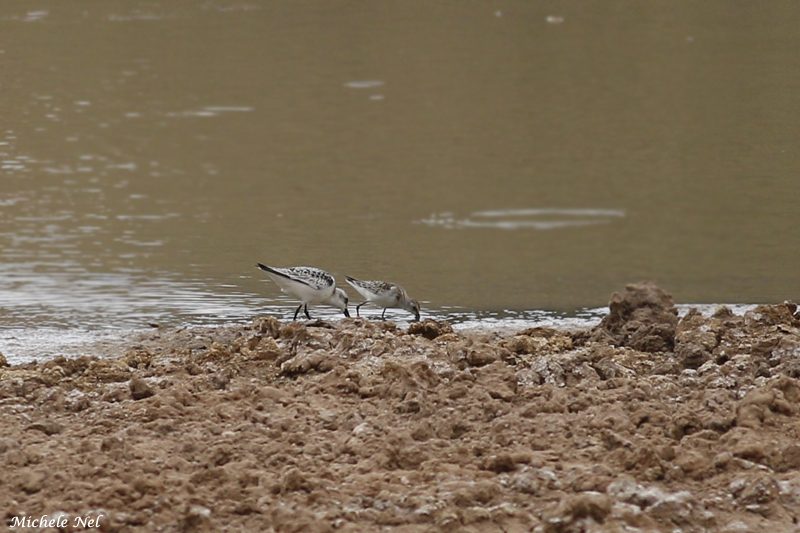
 © Sprocky
© Sprocky © nan
© nan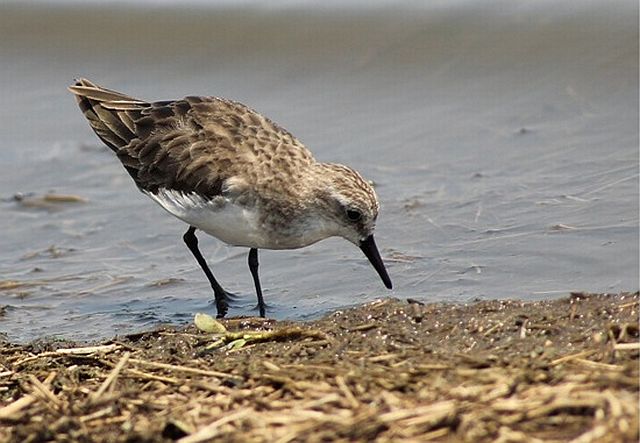 © Amoli
© Amoli